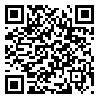Volume 23, Issue 1 (3-2020)
Hakim 2020, 23(1): 144-151 |
Back to browse issues page
Download citation:
BibTeX | RIS | EndNote | Medlars | ProCite | Reference Manager | RefWorks
Send citation to:



BibTeX | RIS | EndNote | Medlars | ProCite | Reference Manager | RefWorks
Send citation to:
kazemi M, forghani M A, mirhabibi N. Identifying and Prioritizing the Barriers to Providing m-health Sustainable Services. Hakim 2020; 23 (1) :144-151
URL: http://hakim.tums.ac.ir/article-1-1949-en.html
URL: http://hakim.tums.ac.ir/article-1-1949-en.html
1- Associate Professor, PhD in Public Management, Department of Management, Shahid Bahonar University of Kerman, Kerman, Iran.
2- Associate Professor, PhD in Industrial Engineering, Department of Management, Shahid Bahonar University of Kerman, Kerman, Iran.
3- Master of Executive Management, Department of Management, Shahid Bahonar University Kerman, Iran. ,nmirhabibi92@gmail.com
2- Associate Professor, PhD in Industrial Engineering, Department of Management, Shahid Bahonar University of Kerman, Kerman, Iran.
3- Master of Executive Management, Department of Management, Shahid Bahonar University Kerman, Iran. ,
Abstract: (714 Views)
Introduction: Capabilities such as the possibility of providing health services with the appropriate cost at any time and place, within the framework of e-health have led to the development of a new concept called mobile health. This study was conducted with a quantitative-qualitative approach to identify and prioritize the barriers to the provision of mobile health services and provide solutions to reduce these barriers in Kerman University of Medical Sciences in 2018.
Methods: An applied research project was carried out in an analytical exploratory manner. First, data were gathered through library studies and deep interviews with experts in the field of electronic health. Then, a paired comparison questionnaire was calibrated and completed by 24 experts in mobile health and prioritized by AHP and Expert Choice software.
Results: In this study, 27 barriers to effective health service delivery were identified. They were categorized into five groups by the PESTEL model. The results showed that the structural-managerial barriers (0.296), human barriers (0.223), economic barriers (0.184), technological barriers (0.154), and legal-legal barriers (0.143), in sequence, were more important barriers than each other.
Conclusion: The research showed that the lack of support from senior managers of health programs is the most important obstacle to the realization of m-health. Hence, we should attract the support of high-level managers from m-health to overcome the obstacles concerning their priority.
Methods: An applied research project was carried out in an analytical exploratory manner. First, data were gathered through library studies and deep interviews with experts in the field of electronic health. Then, a paired comparison questionnaire was calibrated and completed by 24 experts in mobile health and prioritized by AHP and Expert Choice software.
Results: In this study, 27 barriers to effective health service delivery were identified. They were categorized into five groups by the PESTEL model. The results showed that the structural-managerial barriers (0.296), human barriers (0.223), economic barriers (0.184), technological barriers (0.154), and legal-legal barriers (0.143), in sequence, were more important barriers than each other.
Conclusion: The research showed that the lack of support from senior managers of health programs is the most important obstacle to the realization of m-health. Hence, we should attract the support of high-level managers from m-health to overcome the obstacles concerning their priority.
| Please cite this article as follows: Kazemi M, Forghani MA, Mirhabibi N. Identifying and prioritizing the barriers to providing m-health sustainable services. Hakim Health Sys Res. 2020; 23(1): 144-151. |
*Corresponding Author: Department of Management, Shahid Bahonar University Kerman, Iran. Tel: (+98)9135849709. E-mail: nmirhabibi92@gmail.com
Type of Study: Original |
Subject:
General
Received: 2019/09/5 | Accepted: 2020/03/20 | Published: 2020/03/20
Received: 2019/09/5 | Accepted: 2020/03/20 | Published: 2020/03/20
Send email to the article author
| Rights and permissions | |
 |
This work is licensed under a Creative Commons Attribution-NonCommercial 4.0 International License. |





